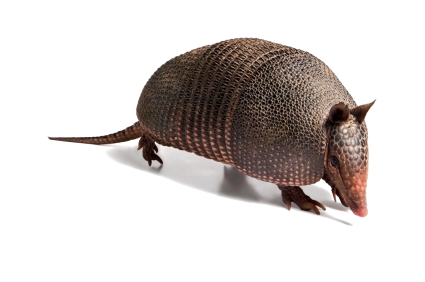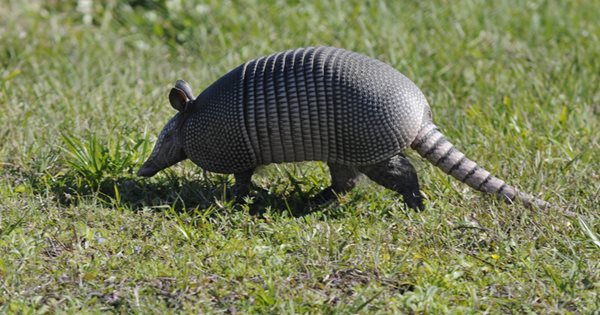Identification of Armadillos
Armadillos have shells made up of seven to nine bony rings that cover their bodies between their shoulders and hips. Their long tails are also made up of bone-like plates. Armadillos’ heads are relatively small and narrow, with pig-like snouts used to dig. Finding tracks is helpful in identification, as the pests have three distinctly long toes with very sharp claws.
Since they are nocturnal, armadillos are commonly mistaken for opossums. Both pests are about the same size, but it’s easy to distinguish between the two because armadillos do not have any fur or hair. For help confirming whether an armadillo or opossum infestation is present, homeowners can look for freshly dug burrows in yards. While armadillos dig their own dens, opossums will move into the vacated nests of other animals.
Learn more about professional armadillo removal.

Damage and Removal
The most significant problem with armadillo infestations is damage to driveways, foundations, and structures near homes due to their burrowing. While it may seem harmless to trap and remove these pests alone, armadillos can be infected with the bacteria that causes leprosy. Therefore, residents are advised to contact the professionals at Critter Control to safely and effectively identify and eliminate armadillos.
Armadillo Images
